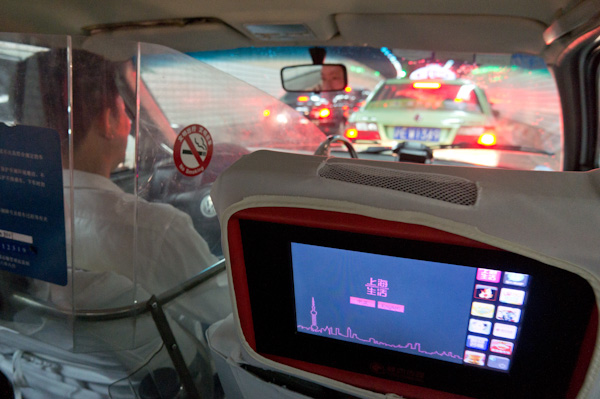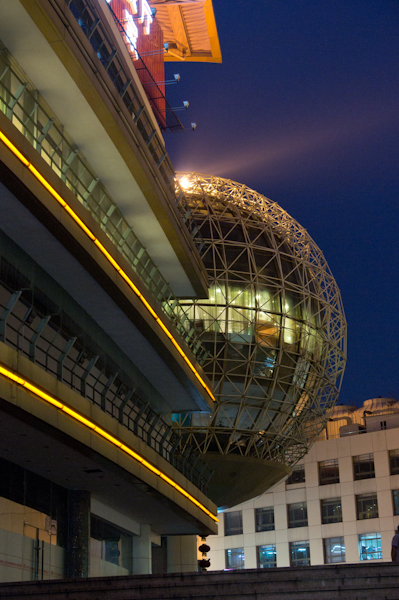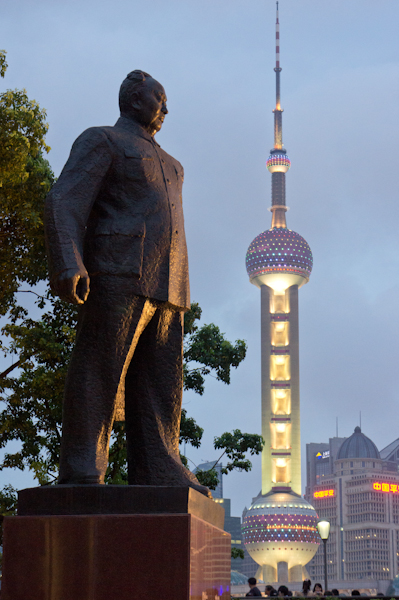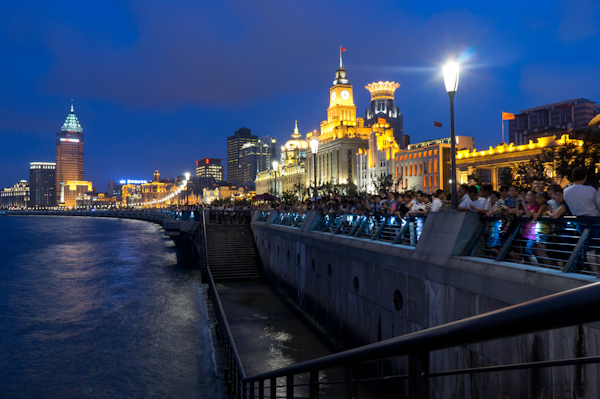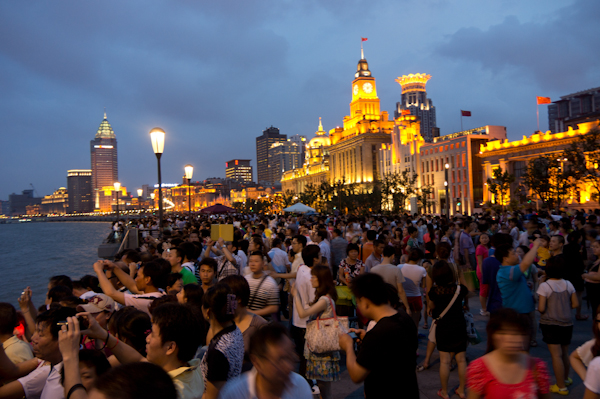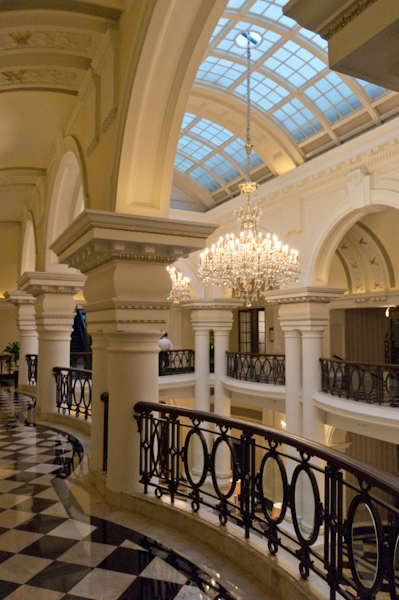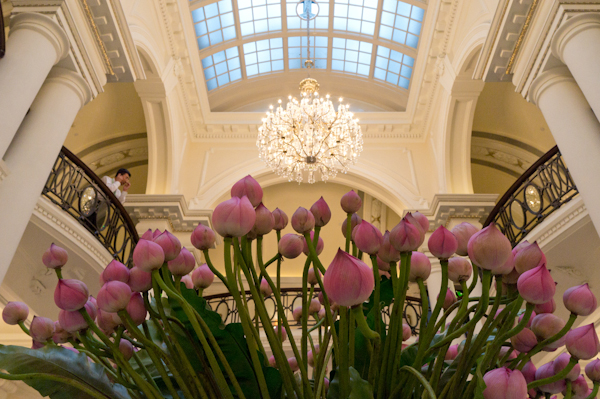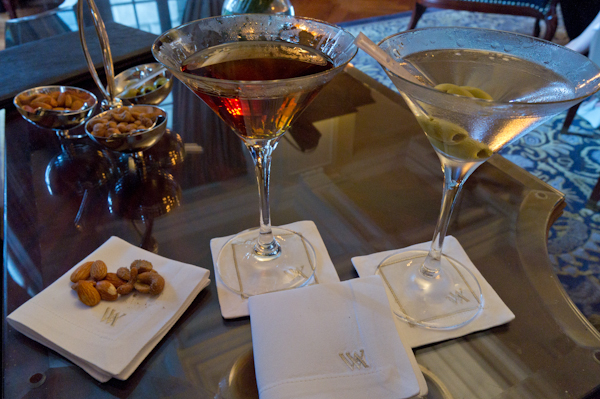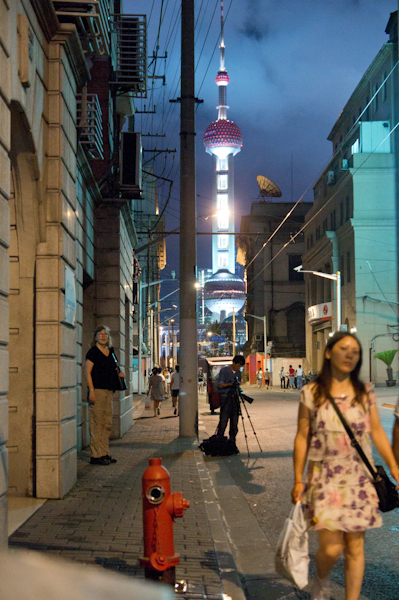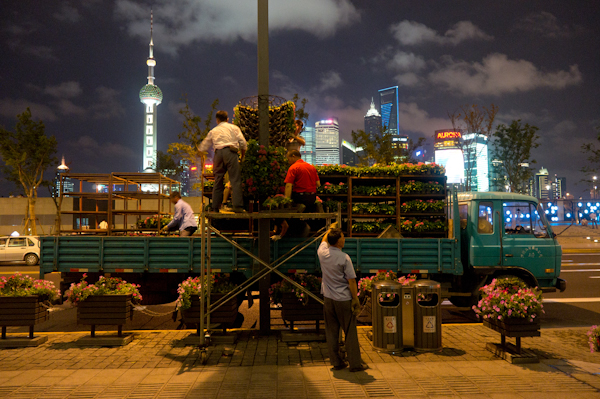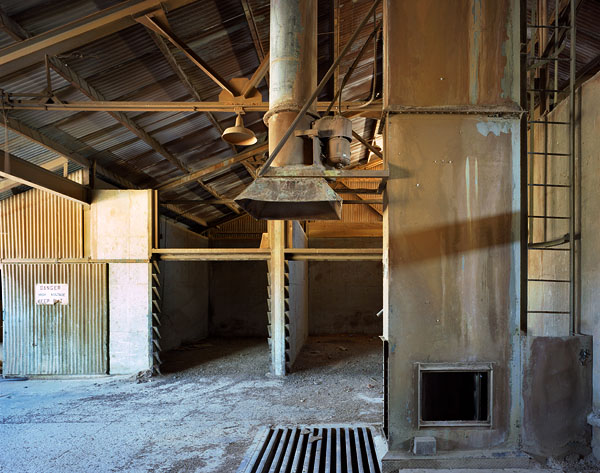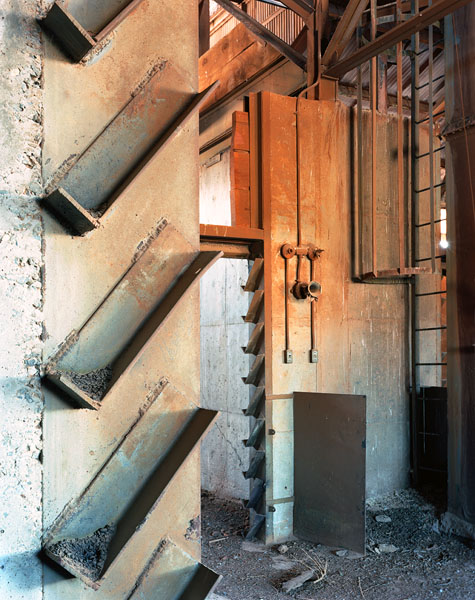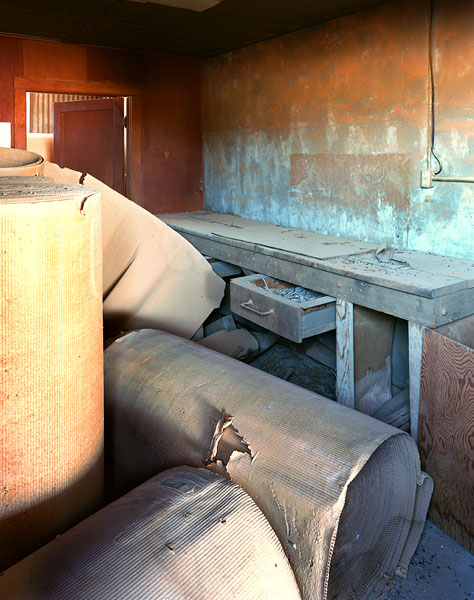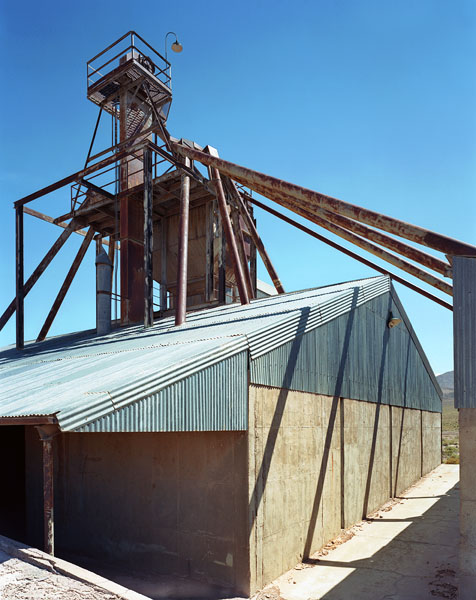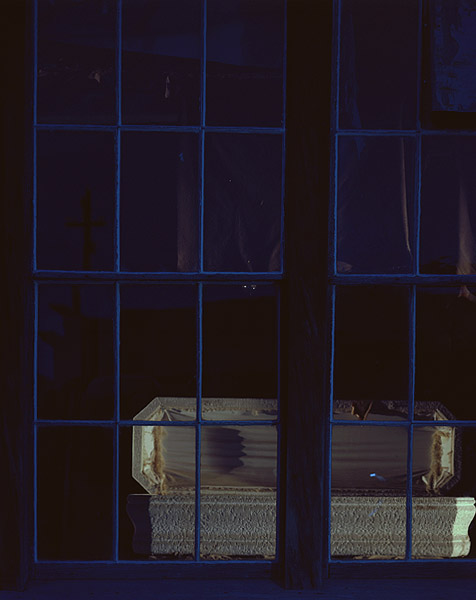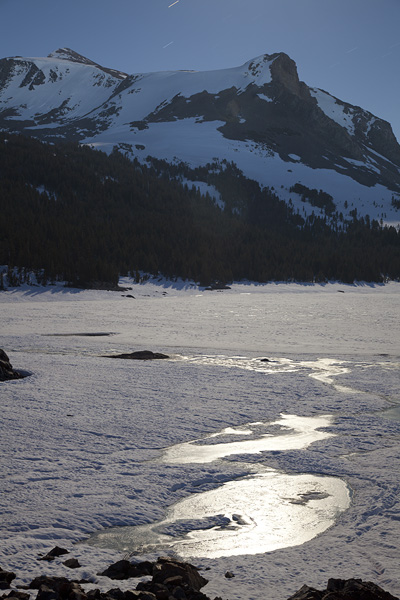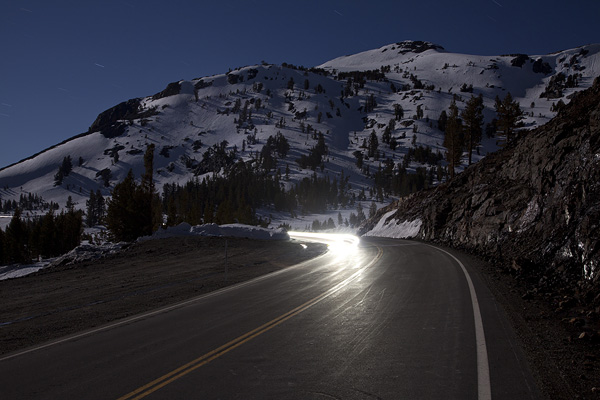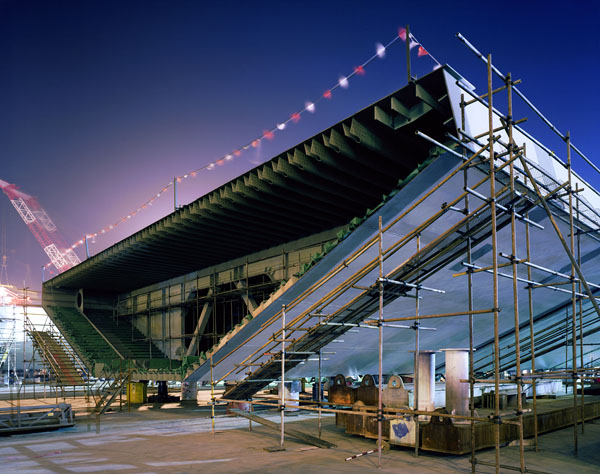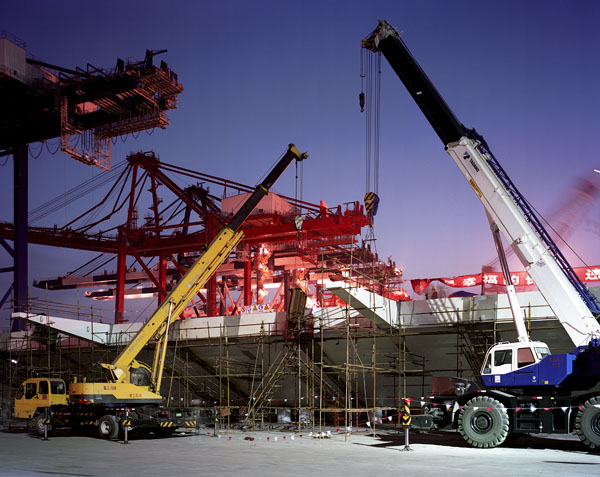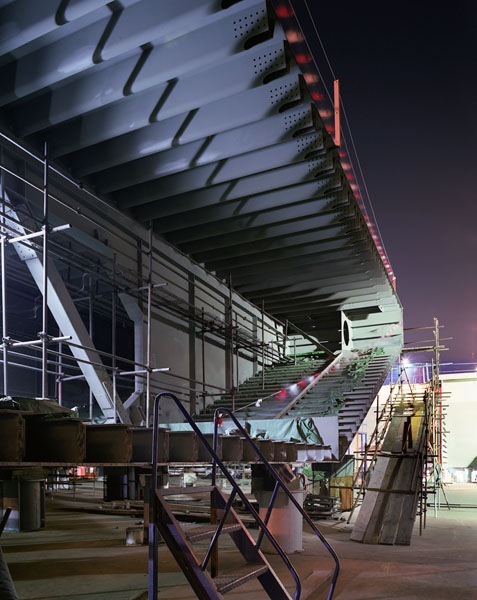For much of July, I was in China for the opening of the show of my work on the Bay Bridge construction project. The images chosen were from my series shot back in 2009 on that trip to Shanghai.
For this post, I’d like to share some of the twilight and night images shot while I was there.
We arrived around 9pm local time, so we missed twilight. We took the MagLev (MAGnetic LEVitation) high speed train into town that takes you the nearly 20 miles in just 7 minutes. Here is a shot of the exterior of the Shanghai city station. All these images were shot with my Sony NEX-5, an ideal travel camera. I have a pretty steady hand to make this 1/4 second exposure.
.
Shanghai is a thoroughly modern city, casting off the past at a furious pace. The auto traffic was noticeably worse since my 2009 trip. Here we are in a Volkswagen taxi (almost every taxi in this city of 28 million is a VW) crawling through the Bund Tunnel at night under the Huangpu River from Pudong to the Puxi side of town. There was insipid TV, cartoons and videos to watch, but I quickly learned how to turn them off.
.
One night we went out to see the Chinese Acrobat show (which was much better than I expected) and saw this interesting building next to the theater. China has a unique sense of architecture, to say the least, and this building, housing a restaurant and shops seemed over the top for what it was.
.
We stayed for a few days with American friends who have been living in Shanghai for about 18 months, which gave us valuable insight into daily life there, from an ex-pat’s view. Let’s just say there are good and bad points! Here is a twilight shot (using a mini tripod against a wall) from the open kitchen window (from the 25th floor) looking at some of the many high rises in Shanghai. The overcast and smog are evident in this view. The trees around their complex made for pleasant walks, as they included ponds and small bridges. Mosquitos are a big problem in this city, and I always seem to attract them, but we learned that they rarely fly higher than 20 floors, so they were able to leave the windows and balcony doors wide open. In July, though, the heat was too intense (hitting 100 with 90% humidity) that air conditioning was in order.
I did several time lapse sequences from their place and from hotel windows, and here is a two hour sequence compressed to a 30 second video. It is shot from Clare and Richard’s guest room balcony where we stayed on the 25th floor overlooking Shimen and Beijing Roads. The smog and overcast limits the views of the Pudong skyline, but you can barely see them on the left.
.
Shanghai, especially the Puxi side, is based on a complex network of a very old road system. Walking the back alleys is an experience in itself, but you certainly would not want to drive there, with the aggressive drivers and brutal liability issues. Subways are fast and efficient, and we took them when going long distances across town, but for Westerners, cabs are the way to go. In the city, they typically cost between $1 and $4 per ride. You must have the destination written in Chinese, as very few taxi drivers speak or read anything else. In this shot, I held my breath and did this hand-held 1/2 second exposure, as we got out of the cab to dinner. This is one of the more pleasant areas of town in the French Concession.
.
In celebration of my first international show, I stayed with the Bay Bridge VIPs at the famed Peace Hotel, built in 1929, and recently restored to its former elegance. It is right on the Bund, across from the famed views of the skyscrapers on the Pudong side of Shanghai. In this twilight shot, we see a massive statue of Chairman Mao, ironically, as if looking over the rampant capitalism now going on in China [correction: this is not Mao, but Chen Yi, Shanghai’s first Communist mayor–thank you Jean Loh from Shanghai for pointing this out]. This is right in front of the Peace Hotel and the Shanghai Oriental Pearl or TV Tower is in the background, across the river.
.
In these next three shots along the Bund, you can see the throngs of people that come here in the busy summer season. It was around 90F degrees in the evenings. We met several young people eager to talk with us who were from remote sections of central and western China visiting Shanghai for the first time. Some even requested to have photos taken with us. There is a tremendous pride by the average Chinese for the transformation of Shanghai into an international city. These shots were taken with the aid of a $2 mini tripod on the edge of the railing or against a pole. Who says camera gear has to be expensive!
.
.
The Peace Hotel is on the left with the green copper roof. You could hardly ask for a better location.
.
Another hotel, just down the street was the Shanghai Waldorf Astoria. The famed Long Bar (built in 1911, celebrating its 100th anniversary) made some excellent cocktails which we enjoyed in the early evening. Here is a view of the mezzanine above the bar with twilight coming through the skylight.
Here is a lower lobby view.
.
And a pair of perfectly made cocktails in the Long Bar with that wonderful blue of twilight spilling in from the window.
.
One evening on a stroll near the hotel, I stumbled on a fellow night photographer, a Chinese man with his camera and tripod taking some long exposures. I tried to talk with him, but he spoke no English and I no Chinese. He seemed a bit nervous, and quickly moved on. I did a quick snapshot of him while leaning on a parked car. It seems night shooters are everywhere nowadays.
.
Late one night, I stopped to watch this group of men installing flower pots on every street lamp along the Bund. They were working so quickly and efficiently going from pole to pole. The next morning, hundreds were in place were there were none the day before, yet no one seemed to notice.
.
Shanghai is an energetic, exploding city, so much that the government has to regulate incoming migration. It also limits the number of cars and the issuance of driver’s licenses (which can cost thousands of dollars), and yet, General Motors Buick division sells more cars in China than they do in the US.
We were hard pressed to find signs of the old and historic, as buildings are being knocked down at a frightening pace. I did wander into abandoned 18th and 19th century structures slated for demolition with wonderful details and patina, now occupied by squatters. In China, all buildings are “deconstructed” and virtually all the materials are reused or recycled. It was fascinating to watch crews of people pulling nails out of lumber and plywood and loading the wood onto waiting trucks. There are pickers on trikes all over town that collect wood, metal, plastic and even styrofoam for recycling. They have local processing centers all over the city that buys the material. This makes Shanghai one of the “greenest” cities on earth.
The fashions in Shanghai are all western-casual, and it was rare to see anyone dressed in traditional Chinese garb (and then only the very old). I first went to China in 1983, and it was so very different then, more like a third-world country. Those days are past as China catapults into the 21st century, destined to be the largest economy in the world by the end of the decade.
After two weeks in Shanghai, we took the train on to Nanjing, where I will share some images and talk about that fascinating city in the next blog post.
<<<<<—–>>>>>
Also, I wanted to mention while I was in China, about the passing of Per Volquartz, who died in mid-July. We had just shared emails with him on China the week before I left, talking about contacts and ideas, as he was well loved in China. It is a big loss of this great photographer and artist, and he will be greatly missed. I was fortunate to get home in time to go to the memorial, where I saw many old friends and also met many new ones. Goodbye, Per, and thanks for all you have given to the photographic community.


